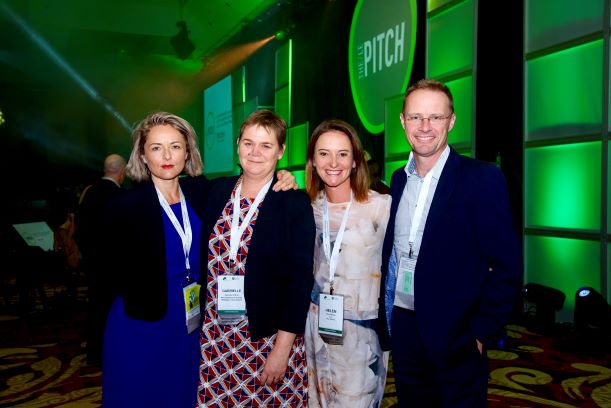Human-centered design, co-creation and the need to be “more than a lawyer” were key themes at the recent In-house Counsel World Summit in Toronto
In-house lawyers from Canada and around the world gathered to explore how the in-house legal profession is changing and the new skills that lawyers need to face these changes. The conference theme was “Beyond Borders: Business and Law in the Global Village” and it was apparent that the challenges and opportunities faced by in-house lawyers are consistent globally.
Delegates heard that the legal profession needs to implement customised technology solutions but with more human input. These seemingly contradictory challenges can be met through human-centered design which aims for systems to be usable and useful by focusing on the users, their needs and requirements. In-house legal teams are acquiring new skills in design thinking to crystallise their needs and translate them as user stories for the internal IT team or external IT provider to develop solutions.
I was relieved to hear the old “more for less” maxim was superseded with strong encouragement from several General Counsel to simplify and streamline the work done by in-house legal teams to ensure high value, high risk matters are given priority. In their teams, everything else is ruthlessly disaggregated and either outsourced or self-managed in the business with legal team guidance. In-house lawyers tell us they have never been under greater pressure and the outdated belief that they have to do everything that comes through the door but with fewer resources, is ultimately unhelpful and leads to lower productivity, stress and burn-out.
Co-creation was another common theme. A number of examples were described where legal teams have partnered either with their external legal provider or a software vendor to tackle a significant process or technology issue and develop solutions together. Not all of the examples given were high-tech and the key philosophy was one of open-mindedness by the firm or provider to a new way of collaborating and to share the creative process with the end user.
The role of sophisticated technology solutions as the means to an end rather than the end itself was also explored. In the start-up zone which showcased new LegalTech providers, one company ran a blockchain-enabled IP database for in-house legal teams. They found that the functionality and the intuitive design of their IP repository was the main attraction for customers and the fact that the service is enabled by blockchain is an additional quality assurance benefit not a core focus for in-house counsel.
I had an interesting discussion with one speaker, Richard Stock of Catalyst Consulting, about whether in-house legal teams should call their internal customers “clients”. In-house lawyers know their actual client is the entity by whom they are employed or engaged but many have fallen into using “client” as shorthand to describe a colleague to whom they are giving legal advice.
Mr Stock’s view is that the use of this term drives unhelpful behaviours internally where customer satisfaction guides prioritisation decisions rather than an objective analysis of risk and value. He noted that other internal service providers such as finance, HR, comms and IT don’t call their internal customers “clients” for this reason and contended that in-house legal teams need to relentlessly focus on delivering value for the real client entity and eliminate all language and behaviour that suggests any other client.

New Zealanders at the conference in Toronto: ILANZ President Erin Judge, ILANZ Executive Manager Gabrielle O’Brien, Conference MC Helen Mackay, ILANZ Committee member and ICW Vice-President Jeremy Valentine. Photo: Monique de St Croix
I also had a spirited debate with the American legal commentator Mark Cohen who argued that there is a growing convergence between the different parts of the legal profession. My view and the views of several conference speakers suggested the opposite – that the roles of in-house and external lawyers have significantly diverged over the past 10 to 15 years and will continue to further differentiate.
In-house lawyers are taking on roles and responsibilities that position them as “more than lawyers” in terms of the value delivered to their organisations and many have added decision-making accountabilities in their roles. We are also seeing a rise in hybrid roles where in-house counsel are performing commercial, procurement, legal operations or policy roles in addition to or as an adjunct to their core legal roles.
In a world where so much of the learning and information we gain is online and remote, the opportunity to hear from and connect face-to-face with thought leaders in the in-house legal profession was invaluable. It is hard to see how technology will ever replace this vital human connection.
This article was originally published on the New Zealand Law Society's LawPoints Bulletin and is republished here with permission.